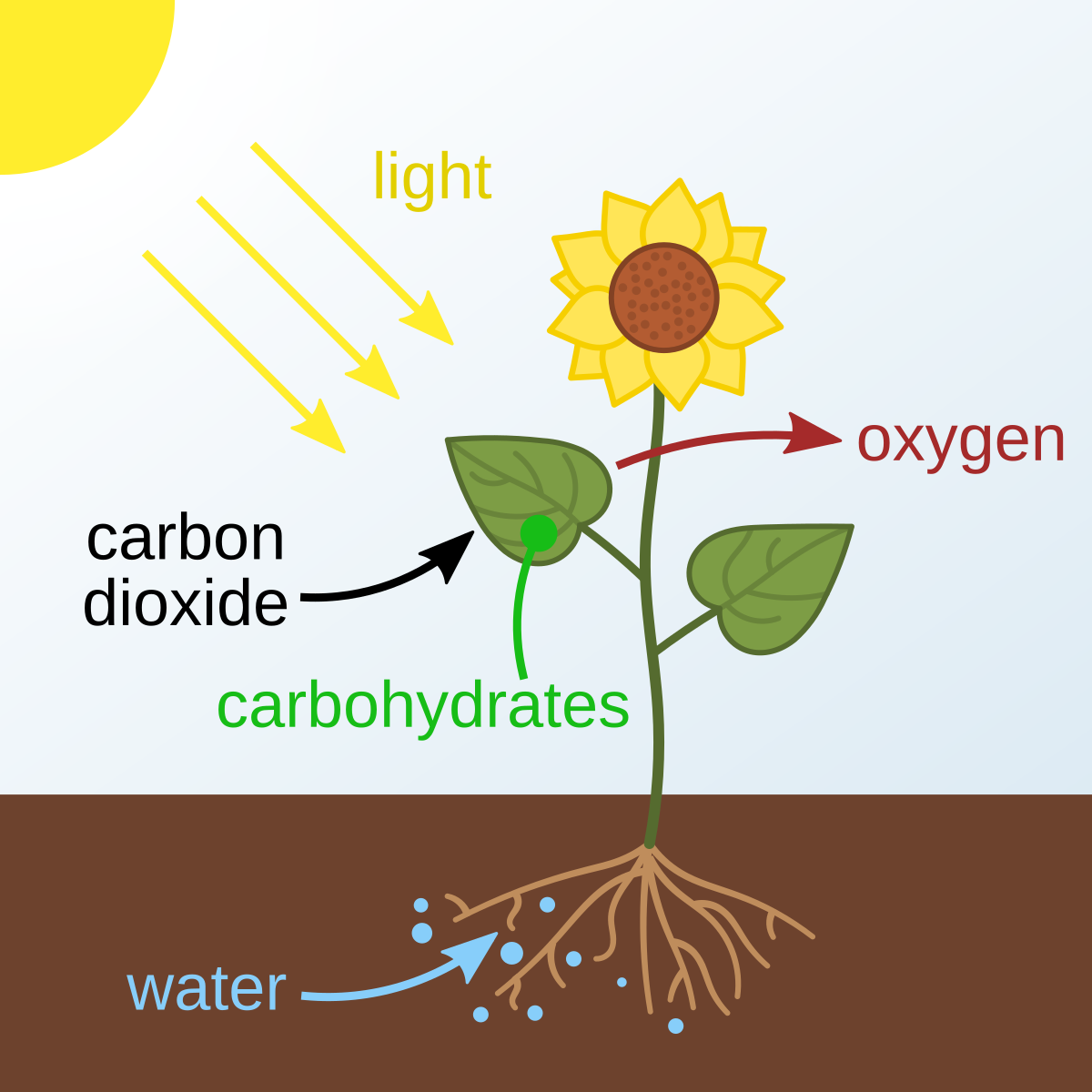 illustration from Wikipedia
illustration from Wikipedia
Unraveling the Mysteries of Photosynthesis: Nature's Solar Powerhouse
Photosynthesis, the amazing process where green plants and some organisms turn sunlight into chemical energy, is essential for life on Earth. It supports almost all ecosystems and gives us the oxygen we need to breathe. Let's explore how light, water, and carbon dioxide work together in photosynthesis, thanks to special cell parts and pathways. From chlorophyll capturing sunlight to making sugars, photosynthesis shows how ingenious nature is.
The Chloroplast: The Engine of Photosynthesis
Photosynthesis happens inside chloroplasts, special structures in plant cells. These contain chlorophyll, a pigment that absorbs light, mainly red and blue light. Chlorophyll makes plants look green because it reflects green light. Inside the chloroplast, thylakoids (membrane compartments) are stacked into grana, like pancakes. The thylakoid membranes hold the light-dependent reactions, where light energy becomes chemical energy in the form of ATP and NADPH. The stroma, a fluid around the grana, is where the light-independent reactions (Calvin cycle) occur. Here, carbon dioxide is turned into organic molecules, making glucose, the main sugar for plant energy and growth.
Light-Dependent Reactions: Capturing the Sun's Energy
The light-dependent reactions start photosynthesis by capturing light energy and turning it into ATP and NADPH. This involves two photosystems, Photosystem II (PSII) and Photosystem I (PSI), in the thylakoid membrane. Photosystem II absorbs light and energizes electrons, which move along an electron transport chain to Photosystem I. This electron transfer powers ATP synthesis through photophosphorylation. Photosystem I then re-energizes the electrons, reducing NADP+ to NADPH. The splitting of water releases oxygen into the atmosphere.
Light-Independent Reactions: Building Life's Molecules
ATP and NADPH from the light-dependent reactions provide energy for the light-independent reactions (Calvin cycle). In the stroma, carbon dioxide from the air combines with RuBP (a five-carbon sugar), catalyzed by RuBisCO. This carbon fixation forms a six-carbon intermediate that breaks into two three-carbon molecules. These molecules undergo reactions, powered by ATP and NADPH, to produce G3P. Some G3P regenerates RuBP, keeping the Calvin cycle going, while the rest synthesizes glucose and other organic molecules for plant growth.
The Importance of Photosynthesis: Sustaining Life on Earth
Photosynthesis is vital for almost all life on Earth. It's the main energy source for most ecosystems and produces the oxygen we breathe. Plants convert carbon dioxide into organic molecules, acting as carbon sinks and regulating the Earth's climate. The oxygen released makes aerobic respiration possible for many organisms.
Factors Affecting Photosynthesis: Optimizing the Process
Several factors affect the rate of photosynthesis: light intensity, carbon dioxide concentration, temperature, and water availability. Light intensity affects the light-dependent reactions, while carbon dioxide concentration affects carbon fixation in the Calvin cycle. Temperature influences enzyme activity, with an ideal range for each plant. Water is needed for splitting water molecules and maintaining cell turgor pressure.
Adaptations for Photosynthesis: Diversity in Nature
Plants have adapted to optimize photosynthesis in different environments. C4 and CAM photosynthesis are special pathways that help plants thrive in hot, dry climates by reducing photorespiration. C4 plants have specialized leaf anatomy that separates carbon fixation from the Calvin cycle, while CAM plants open stomata at night to take in carbon dioxide and store it for daytime use.
Photosynthesis and the Future: Harnessing Nature's Power
Understanding photosynthesis is key to addressing climate change and food security. Scientists are exploring ways to enhance photosynthetic efficiency in crops to increase yields. Artificial photosynthesis, mimicking nature's process to convert solar energy into fuels, has great potential for sustainable energy production.
Conclusion
Photosynthesis is a marvel of nature, driving life on Earth. Its molecular mechanisms provide the energy and oxygen that sustain almost all ecosystems. As we learn more about photosynthesis, we appreciate the interconnectedness of life and nature's ingenuity. Further research will lead to solutions for a sustainable future, harnessing the sun's power to address global challenges.
Published on February 2, 2025
reference: Various Article on internet
Gema
Wordsmith and content writer passionate about creating high-quality content that informs, entertains, and inspires. Let me bring your brand's story to life.
All stories by : Gema

0 Comments